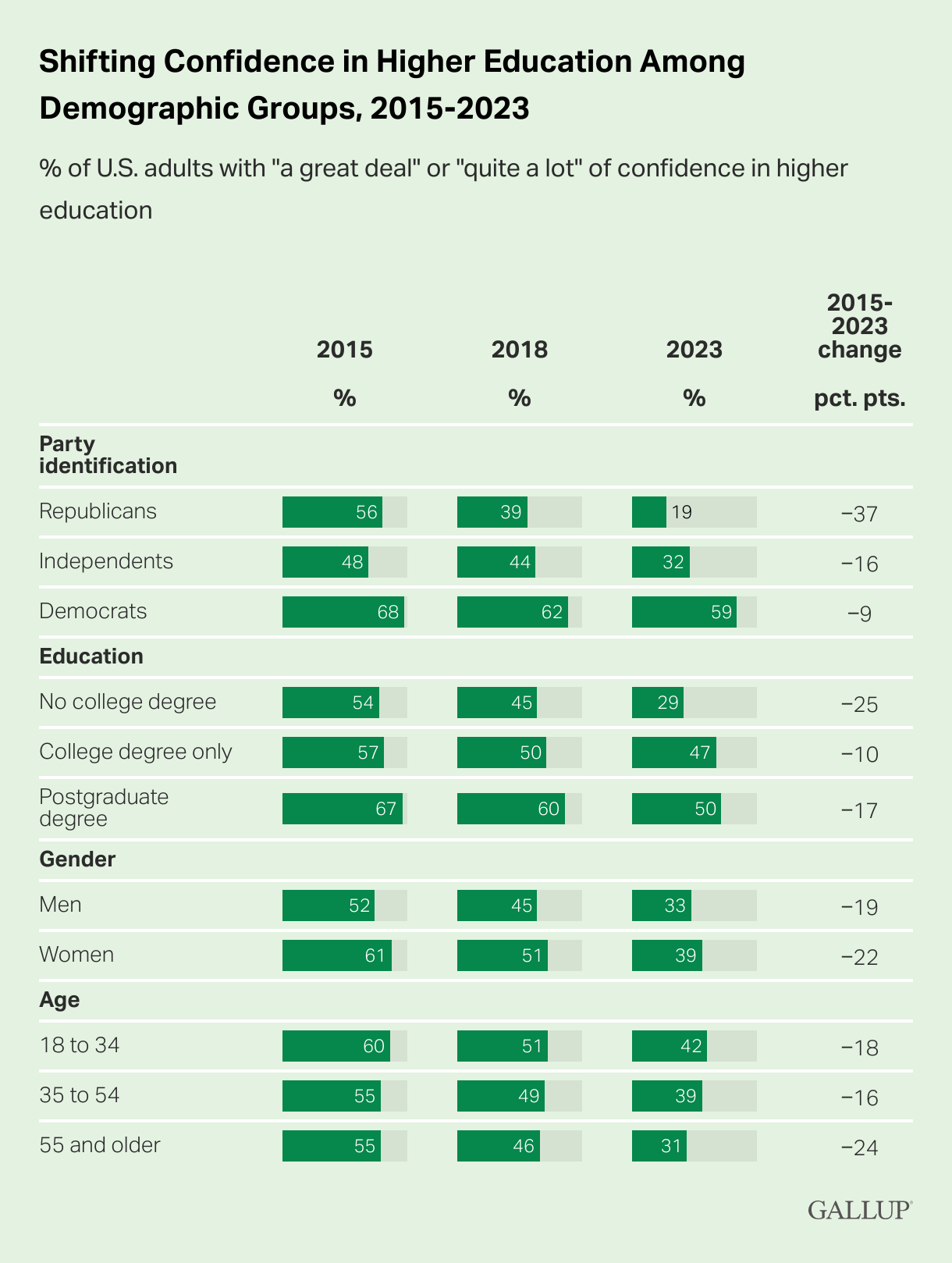This last week, America skated a millimeter away from a dark, dark timeline.
An assassination of a leading political figure, former President, and current front-runner for the next president should not happen in America. So, I must ask what led us to this outcome.
The answer to this question can explain why we’re experiencing more events taking us to the precipice (and why we’re likely to continue experiencing more).
As I see it, these five structural components underlay much of our society’s polarization.
Lowest Common Denominator Syndrome
In an increasingly complex and complicated world, in a more diverse world, we encounter lowest common denominator syndrome. LCD Syndrome refers to tailoring mass communication to the least informed of the target audience. This approach simplifies messages, guidelines, or recommendations to ensure they are easily understood, maximizing comprehension and compliance across a diverse population.
Dumbing things down.
LCD Syndrome encourages telling white lies and small untruths to increase compliance. This approach, however, erodes trust. Repeated lies exposed as untruths erode institutional credibility, fostering widespread skepticism and deepening societal divisions. Falling trust in scientists to act in the best interest of the public is a most recent example.
Telling white lies for the “greater good” erodes trust and credibility. The erosion of trust creates an unhealthy amount of blame, skepticism, and conspiracy (even now from the left).
Identity Politics and Right Speech
There’s no more effective way to polarize a population than to make their most prominent and important attribute their individual identity. Emphasizing individual differences over shared experiences creates hierarchies of oppression instead of fostering connection and understanding.
Combine the tendency for identity politics champions to monitor and censor speech, and we get a situation that fosters division, hierarchy, and silence.
How many times have you not said something over the last eight years for fear that there would be repercussions or judgment? Diversity of opinion and thought is a direct reflection of a healthy society. Instead, we’ve created an environment that shuts down earnest but difficult conversations while encouraging blaming, shaming, and ostracizing.
Fast Food Culture
I call the current dominant culture in America Fast Food Culture. Our society optimizes for maximum convenience and minimum resistance (because it’s most profitable). Yet, living a life that’s too easy, convenient, and disposable hollows out significance.
Life thrives under challenge. Too easy a reward creates sickness. The modern phenomenon of excess is entirely foreign to human life throughout history as we strived, struggled, and starved our way forward (and ofc many still struggle and this message is not for them).
Because our culture makes challenges easier to avoid, we need to purposefully add them back in. Without them, we become a culture of victims and blamers who wait for someone else to solve their problems (the nanny state).
Fast Food Culture contributes to polarization by creating a society of individuals who are less resilient, less capable, and more prone to seeking quick fixes. When faced with complex societal issues, this mindset leads to oversimplification, blame-shifting, and a reluctance to engage in the hard work of finding nuanced solutions.
Loss of Truth-Making Organizations
America (and by default, the West) has lost the ability to use disagreement to fortify truth. Today, disagreement is categorized as an attack on “The Truth” instead of as a necessary tool for creating stronger positions.
It’s no surprise that trust in media has dramatically fallen…
What’s most shocking to me is the overall drop in confidence in higher education across ALL demographics…
The media and universities once trusted sources of truth, have increasingly become platforms for ideological messaging. This shift has created a problematic cycle where the end result is not objective understanding. Instead, many in these institutions promote predetermined conclusions rather than encouraging critical thinking and open-ended inquiry.
Journalists and the media’s best role in our world must be to hold the powerful accountable. Our universities must be places of open exploration, risk-taking, and the pursuit of knowledge.
Relationship with Technology
Technology is a tool. It is not inherently right or wrong, good or evil. Only when we apply and integrate technology into our lives can we discuss its merits.
Well, the simple truth is that our current relationship with technology reinforces reality distortion fields, confirmation bias, ADD, addiction, and disconnection.
The world you live in online does not reflect reality. How people speak online, how they look, and how you perceive them is FAR different from reality. These reality distortion fields, as I call them, create an unrealistic image of reality through which we compare to our own mundane analog life.
Algorithms optimized for engagement and increased time on an app feed you just the right content to confirm your biases and keep you coming back. Gamification, notification, and atomization target the Achilles Heel of our most addictive tendencies.
Maybe the human brain is not meant to receive immediate access to everything happening in the world at all times packaged into a 25-second dance video from a cute girl? Our primitive biological hardware is now fighting an evolutionary battle against alien technology. The outcome is division, polarization, and addiction.
Tying it all together
These observations are not the end-all be-all for polarization. However, I believe they’re some of the strongest forces creating an artificial separation between us.
We’re in a rapidly changing world that discourages tough conversations and encourages escaping into fantasy. Our leading institutions do not trust us to make the “right” decisions, so they spoon-feed us white lies, sowing the seeds of their own destruction.
Social media pulls at the loose threads of our society, creating distorted views of reality. What happened in 2013 that dramatically changed the perception of relations between Black and White Americans? It wasn’t Donald Trump…
Our culture optimizes for convenience and easy reward. While that’s an incredibly profitable path for some, it is not the path to a fulfilled population.
The big problems we face cannot be solved overnight. Many of them may only be solved as one generation passes to the next. The path forward lies in fostering critical thinking, encouraging genuine dialogue across differences, and rebuilding trust in our institutions.
Stay polarized,
-Jared
P.S. Here are some of my favorite tweets of the week:









fucking brilliant! Miss you!